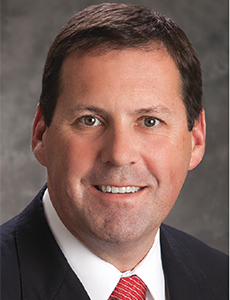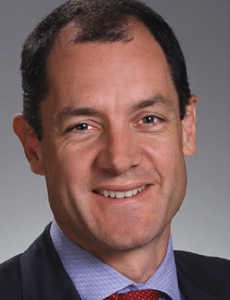NAPSLO 2016
Fuel for Innovation

The pressure on excess and surplus (E&S) lines brokers’ and insurers’ top lines has never been greater, say industry experts.
Increasing competition, mergers and acquisitions activity, and available capital, not to mention declining rates, have all resulted in many companies being squeezed out of the market.
However, the E&S industry continues to outperform the overall property/casualty market, reporting profitable results for the second straight year in 2014, according to A.M. Best. The report on performance in 2015 is due in September.
Total surplus lines direct written premiums also increased by 6.7 percent during the same period in 2014, compared to 4.5 percent for the total P&C market, the ratings agency said.
“The market is a very competitive place right now.” — Wyeth Coburn, wholesale broker and producer, Risk Placement Services Inc.
Added to that, ahead of the National Association of Professional Surplus Lines Offices (NAPSLO) annual convention in Atlanta this month, companies have become increasingly focused on customizing and innovating their products and services in order to stay ahead of the competition.
As a result, many have invested heavily in cutting-edge technology as well as employing ever more sophisticated underwriting and risk mitigation strategies.
“The market is a very competitive place right now,” said Wyeth Coburn, a wholesale broker and producer at Risk Placement Services Inc.
“Most of the major brokers all have the same product so it’s really about differentiating yourself through innovation and the quality of service you can provide.”
Market Pressures
Scott Culler, regional president at Markel, said one of the biggest challenges facing E&S brokers and insurers is the continued increase in competition and capital availability, particularly in property.
“There are new players coming into the market all the time, which can be a big challenge for brokers when they have 50 companies knocking on their door all looking for business,” he said.
In terms of premiums, on average, property decreased by 10 percent and professional lines by at least 5 percent, while casualty and management liability were also under pressure, experts said.
Jeremy Johnson, president, U.S. commercial, AIG, went as far as to say that the property market had become competitive to the “point of irresponsibility” in terms of its pricing and terms.
“There’s no doubt that the market is a lot more competitive than it was a year ago,” he said.
A key driver for increased competition has been the acceleration in M&A activity over the last year.
Among the biggest deals was Hartford Financial Services Group’s $170 million takeover of Northern Homelands.
James Drinkwater, president of AmWINS brokerage and one of NAPSLO’s wholesale broker directors, said that companies increasingly face competition both from within the E&S industry and the wider P&C market.
“The biggest challenge for us is the traditional market’s creep into the E&S space,” he said.

David Bresnahan, executive vice president, Berkshire Hathaway Specialty Insurance
“Competition is fierce, with new insurers and MGAs entering the space on an almost daily basis.”
David Bresnahan, executive vice president at Berkshire Hathaway Specialty Insurance, said the increased competition resulted in “too much supply chasing too little demand.”
“It’s a really difficult underwriting environment at the moment, but that could all change with one big event,” he said.
“Property is certainly the biggest outlier — it’s the area where the market is down much more than any other this year, fueled by an aggressive reinsurance industry flooding the market with capital.”
Robert Raber, a senior financial analyst at A.M. Best, however, said that despite added competition, he expects premiums to be slightly up this year because of insurers’ pricing power.
Underwriting and Risk Mitigation Strategies
Johnson said the biggest challenge to the industry was to make sure that it remained relevant to its customers in an ever-changing environment.
“At a time when our business models and those of our customers are changing, and technology and computer power is creating a paradigm shift, we need to be able to deliver to them — not only in terms of product, but also the expertise to help them reduce their total cost of risk,” he said.
“In order to do this, we need to differentiate ourselves not only in terms of pricing, but also our value proposition to the customer through the use of our underwriting and risk mitigation strategies.”
Drinkwater said that there was a loosening of underwriting guidelines, with insurers considering risks they hadn’t previously, as well as expanding their terms and conditions.
However, he added, this was tempered to some extent by companies cutting their distribution costs and outsourcing specialist underwriting.
Meanwhile, others have been more proactive in terms of risk mitigation.
Scott Lockman, director of commercial insurance at Clements Worldwide, said that being small enabled his company to come up with new strategies and to create new products more readily than its larger competitors.
“Most of the smaller companies in the E&S space, ourselves included, are very innovative on the pre-loss side and in the analysis of their exposures in order to find ways to mitigate against them,” he said.
Investment in Technology
Raber said that companies were continuing to invest in their technology platforms in order to bind policies more quickly and effectively, as well as to control costs.
“Increasingly companies are seeking to customize their product and provide the insured with the exact coverage that they need,” he said.
“That also helps them with their rate structure, and to correctly price for a particular product.”
Bryan Salvatore, president of Zurich North America Commercial’s specialty products business unit, said that data and analytics are increasingly being used to better understand risks and to focus on more profitable business.

Jeremy Johnson, president, U.S. Commercial, AIG
“That in turn improves not only the service for the customer, but also makes the risk selection and underwriting process more efficient,” he said.
Johnson said that AIG had invested heavily in technology to help its customers understand their key risk drivers and leverage data, including the use of unmanned aerial vehicles for building and pipeline inspections, and personal sensor devices for employees to improve workplace safety.
“The name of the game is to try to out-risk-select the competition at a time when more and more markets are moving towards big data and black box technologies,” Bresnahan said.
Regulatory Challenges
Aside from the daily financial challenges for E&S companies, there are still a host of regulatory hurdles that need to be overcome.
Brady Kelley, executive director at NAPSLO, testified before the House Financial Services Subcommittee on Housing and Insurance in January about the Flood Insurance Market Parity and Modernization Act.
The bill was subsequently passed by the committee in March and then the full House in April.
If passed by the Senate at the end of this year, Kelley said the bill would endorse private flood insurance issued by nonadmitted insurers.
“This bill, in effect, changes the current federal definition of private flood insurance to ensure that surplus lines insurers are eligible to offer private market solutions to consumers with flood risks that fall outside of the national flood insurance program or the traditional market,” he said.
New Areas of Opportunity
Despite its many challenges, the E&S market remains well placed to capitalize on new opportunities and risks that the traditional market doesn’t typically cover.
Drinkwater said that cyber liability remained the No. 1 emerging risk for the market.
“One of the biggest emerging risks is poorly handled cyber breaches, which ultimately cost companies a lot of money and CEOs their jobs,” he said.
Other areas, he said, included health care, logistics and private flood.
Lockman said that the biggest areas of opportunity were in higher risk categories such as kidnap and ransom, political violence and evacuation coverage.
“The increase in the number of humanitarian companies being deployed in high risk areas around the world has presented big opportunities for growth and we don’t see that slowing down at any point,” he said.
Culler added: “What’s exciting is that despite all the competition and challenges in the marketplace, the E&S industry continues to grow.” &










